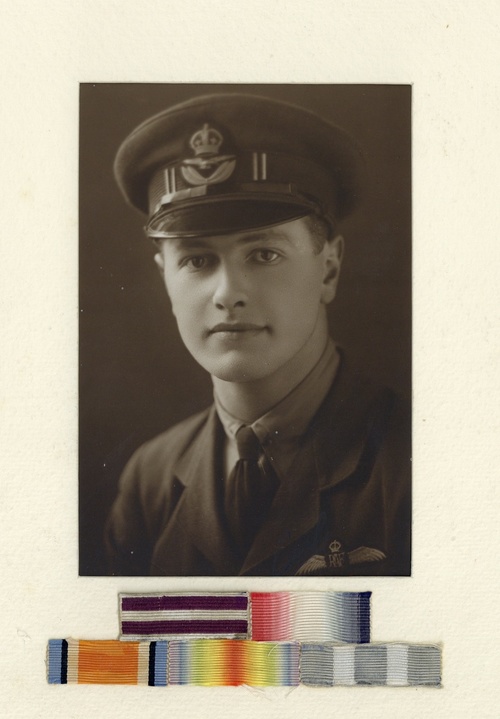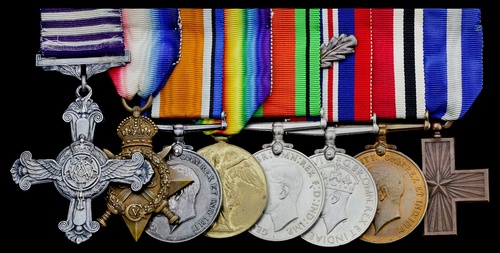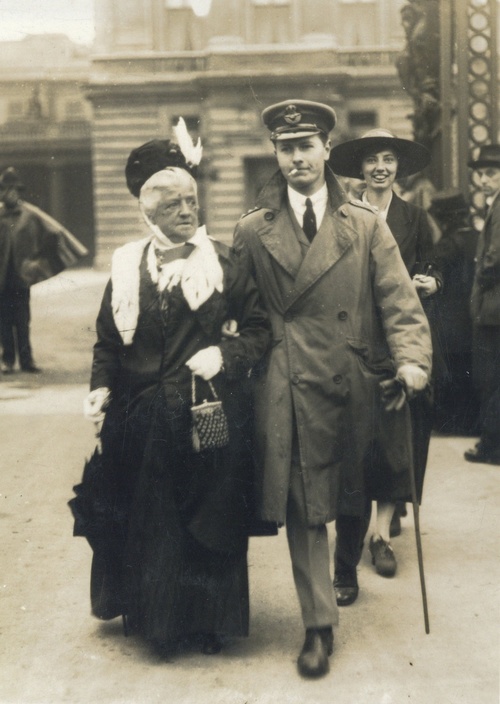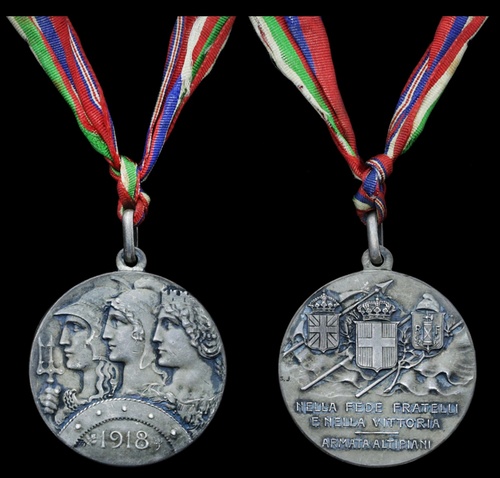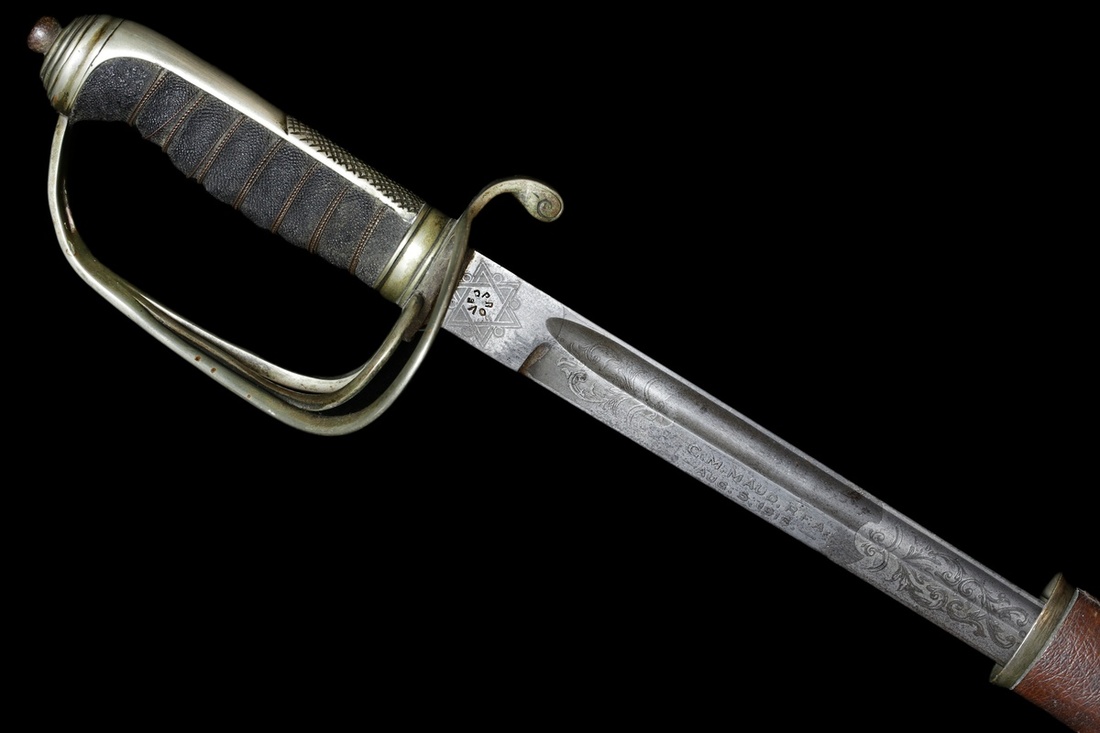Auction: 20001 - Orders, Decorations and Medals - conducted behind closed doors
Lot: 736
'A bold Scout Pilot, who possesses in a high degree the true fighting spirit. He has shot down seven enemy machines.'
Maud's D.F.C. citation.
The exceptional 'Italian Front' Great War D.F.C. and Italian War Merit Cross group of eight awarded to Squadron Leader C. M. Maud, Royal Air Force, late Royal Artillery and Royal Flying Corps, who claimed eleven kills in Sopwith Camels of 66 Squadron over four months of hard campaigning
Distinguished Flying Cross, G.V.R., unnamed as issued, 'C. M.' scratched onto reverse right arm; 1914-15 Star (2.Lieut. C. M. Maud. R.F.A.); British War and Victory Medals (Capt. C. M. Maud. R.A.F.); Defence and War Medals 1939-45, with copy M.I.D. oak leaf; Special Constabulary Long Service Medal (Charles M. Maud); Italy, Kingdom, War Merit Cross, 34mm, bronze, unnamed as issued, mounted swing style as worn, the D.F.C with original '1st type' riband and separate fitted leather box of issue, and a loose Italian Altipiani Silver Medal for the 6th (Plateau) Army, nearly extremely fine (9)
D.F.C. London Gazette 2 November 1918.
Italian War Merit Cross London Gazette 8 February 1919.
Charles Midgley Maud was born at 'The White House', Pool-in-Wharfedale, Yorkshire on 1 April 1898, the son of Charles and Lillian Maud. Educated at Shrewsbury School, he gained a commission as a 2nd Lieutenant with the 155th Brigade, Royal Field Artillery on 5 August 1915, arriving in France on 26 November that year. Trench warfare evidently took its toll for he was invalided to England on 17 April 1917, but declared 'fit for general service' on 11 July. Upon recovery he transferred to the Royal Flying Corps, receiving a week's preliminary training at No. 1 School of Military Aeronautics, Reading. He was then posted to No. 13 Squadron for basic flying training, gaining his 'wings' on 23 December. After advanced flying training with No. 201 Squadron, on 8 March 1918 he was assigned to No. 66 Squadron at San Pietro in the Italian theatre. On arrival he was promoted to Lieutenant (backdated to 1 July 1917).
66 Squadron was tasked with offensive patrols over the Po Valley. Maud scored his first 'kill' at 11.15 a.m. on 1 May 1918, while flying Sopwith Camel B7283. The victim was an Albatros D.III, which Maud shot down south-west of Conegliano in the Veneto. He destroyed an LVG C south of Oderzo the next day. Eight days later, flying Camel B5623, he drove an Albatros D.V 'out of control' south-west of Caldonazo, while downing another Albatros D.III over the Centa Valley on 18 May. On 20 May, he drove down his second D.V over Alano di Piave, gaining 'ace' status. Maud later destroyed an Albatros D.III south of San Stino di Livenza on 8 June, and an LVG C south-west of Belluno on 10 July. In August, flying Camel C46, he gained three further victories, destroying an LVG C west of Feltre on 5 August and another over Vittorio on 22 August. He shot down a DFW C over Vidor the next day, and was appointed Flight Commander with the temporary rank of Captain on 1 September. He gained his eleventh and final victory on 7 October, by driving down another Albatros D.V over Oderzo. His outstanding achievements earned him the Distinguished Flying Cross and the Italian War Cross of Valour. He was photographed outside the gates of Buckingham Palace following his D.F.C. investiture, accompanied by his formidable-looking mother (illustrated).
Maud undertook volunteer police service in the inter-war years, receiving the Special Constabulary Long Service Medal. On 14 February 1939, he returned to military service and was granted a commission as a Pilot Officer on probation in the Royal Air Force's Administrative and Special Duties Branch. On 5 September, following the outbreak of war, he was confirmed in his appointment and promoted to Flying Officer. On 1 January 1940 Maud was mentioned in dispatches, and on 22 October 1943 he advanced to Squadron Leader. He retired on 10 February 1954 and married Helen Maud, living at 35 Mallorie Park Drive, Ripon. He died at a hospital in Ripon on 10 March 1974; sold with a file of copied research and photographs.
Sold with the recipient's 1897 Pattern Infantry Officer's Sword, by W. H. Hall, Sheffield, of standard form, the single-edged straight blade etched with foliate designs, the nearside bearing Royal Artillery imagery and the maker's name, the offside featuring the Royal Cypher G.V.R. above the Royal Artillery emblem and 'C. M. MAUD, R.F.A. - AUG. 5. 1915. -' near the forte, the steel hilt of plain Gothic style, overall length 1032 mm, blade length 880mm, terminating in a spear point for the last 220mm, with original leather scabbard, generally very fine
For the recipient's mounted group of dress miniatures, see Lot 1174.
Subject to 20% VAT on Buyer’s Premium. For more information please view Terms and Conditions for Buyers.
Sold for
£6,500
Starting price
£5500

